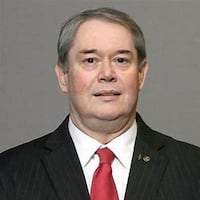In a revised development plan submitted, developer Larry Dillin removed 252 multi-family units and added 32 more townhouses from the plan and moved a 113-unit senior independent living facility to the south end of the property.
According to city officials, the highlights of the revised plan submitted by Dillin and Doug Borror for the Easton Farm development includes:
- The elimination of 252 multi-family living units from the plan;
- The total number of housing units (single-family lots and townhomes ) is 299, versus the Planning Commission recommended version of 519 and the original proposal of 577 units. That constitutes a 48% reduction from the original submittal and 42% reduction from the PC recommended plan.
- The Senior Independent Living has been shifted to the south. City officials said it is still 113 units and appears to be three-stories tall. They said this needs to be verified. The facility is now in the lowest point of the entire property;
- 32 owner-occupied townhomes have been added in the area where the multi-family was previously and there are 79 total townhomes now;
- The commercial area has now increased from 14 acres to 19 acres.
A third and final reading and vote is scheduled for council’s Sept. 16 meeting.
City officials are hoping the Easton Farm development will attract young professionals to reside there and have more retail and restaurants to Springboro as well as spurring more development. In a number of city surveys, residents have cited the lack of higher-end dining in Springboro as finer restaurants are in neighboring communities.
A few weeks ago, some on council suggested eliminating the multi-family housing. Mayor John Agenbroad suggested Dillin “sharpen his pencil more” to figure out a way to drop the apartments component of the plan.
Agenbroad commended the developers for making this change.
Councilman Dale Brunner said he wasn’t impressed with the multi-family housing. However, he felt Dillin had moved forward to help the development by eliminating the apartments.
Dillin told council his commitment has never changed. He said Easton Farm is a living, breathing project to create a new neighborhood. He said they have followed the city’s land use plan to create a unique neighborhood.
In a comment early Thursday afternoon to the Dayton Daily News, Dillin said, “Our plan, especially the commercial detail, is still unfolding. We are comfortable taking out the multi-family. We even have a commercial plan that is all office, retail and services, with no independent living. As the project unfolds and we’re able to start marketing, the marketplace will tell us where it wants to go. ... What this part of the process is doing is committing to a maximum residential density along with acreage for residential, the homestead, open space and the commercial corridor. Right now, all we are asking for are approved uses, and rezoning.”
City Planner Dan Boron told council Thursday that the new density rate is 3.56 units per acre according the formula the city uses to make the density calculations. The density calculation excludes the 16-acre family farm and a 113-unit independent living facility, something opponents have disagreed with city officials.
Since the initial plans submitted in March, the developers made a number of changes, including the reduction of building heights from four stories to three; eliminating the parking garage; reducing the number of apartments; increasing the green space; donating more acreage to North Park, and this week, eliminated the apartments from the latest revised plan. The dedicated open space was calculated at 22.89 acres, according to the latest submission.
David Beckman, who opposes the project, called the latest revision “a step in the right direction,” but said he calculates the density rate at eight units an acre.
“No one is saying don’t develop,” he said. “We want development to stay within the character of Springboro. Removal of the apartments is a step in the right direction, but it doesn’t make it a good plan.”
Beckman said the proposed 31-foot wide lot sizes are smaller than some lots in the city’s historic district, which “are not large enough for a regulation cornhole game.”
Mike Quast said residents had the understanding that the zoning would be blended and that the Easton Farm plan “doesn’t mesh with the history of Springboro. He also questioned the survivability of new commercial buildings and restaurants, adding “I don’t see restaurants making it here.”
Resident Donald Cummings also raised issues about the increased commercial area of the project, and how it would fare if there is more development south of Austin Landing South.
Resident Jacqueline Curl said she supported the project. “It’s a home run for Springboro,” she said.
About the Author
